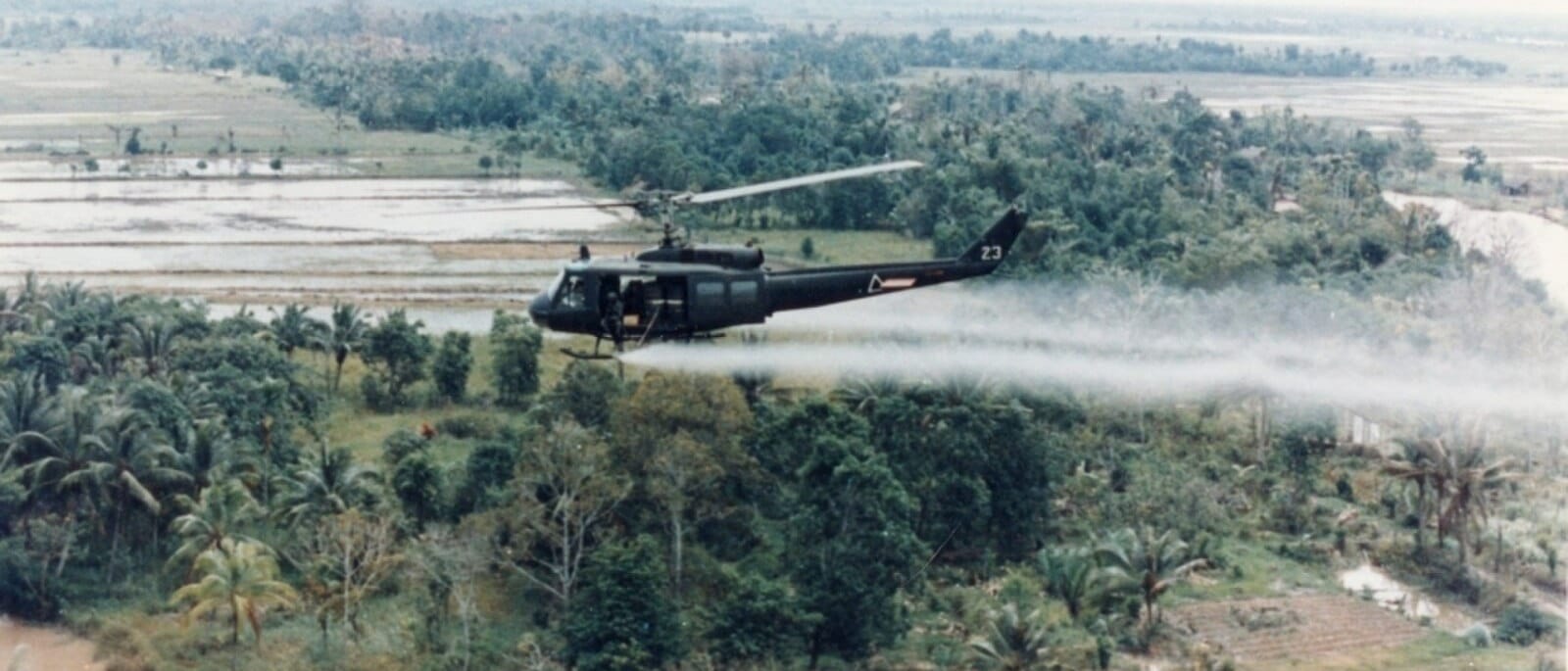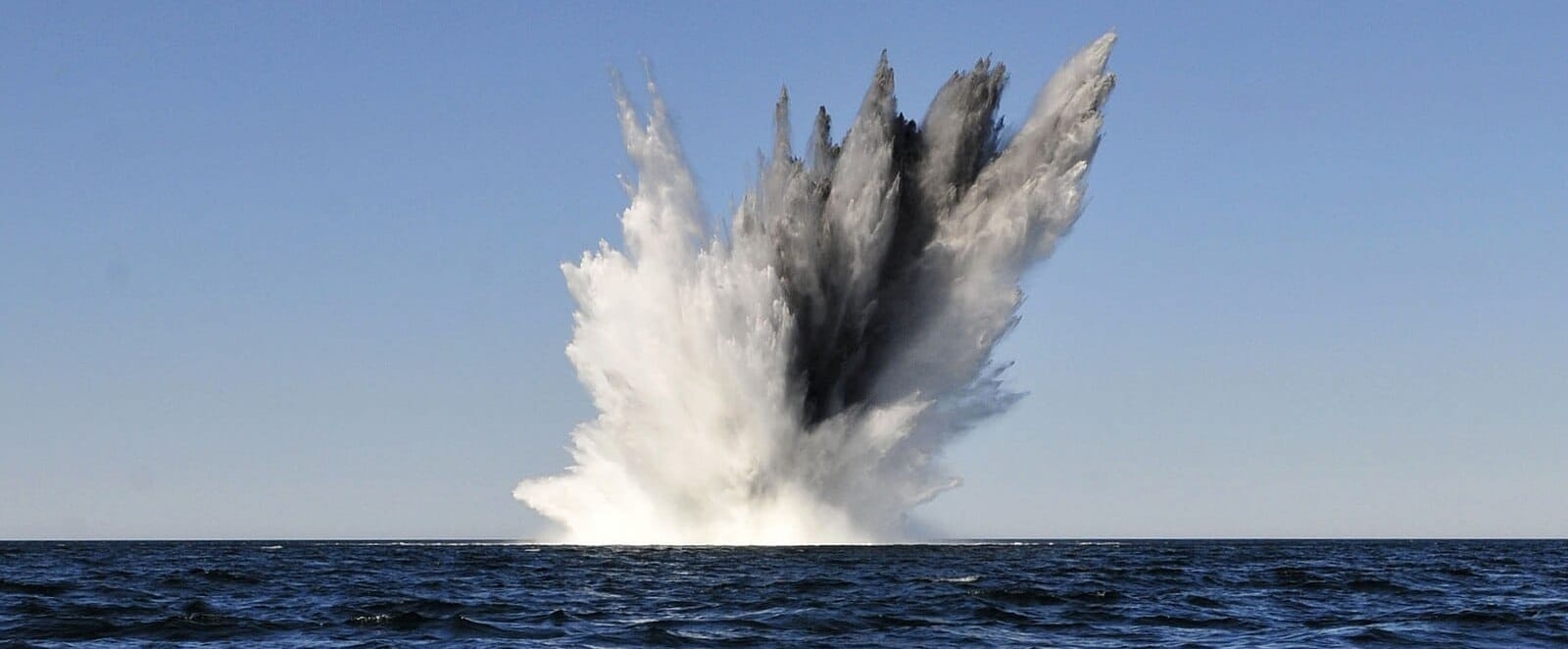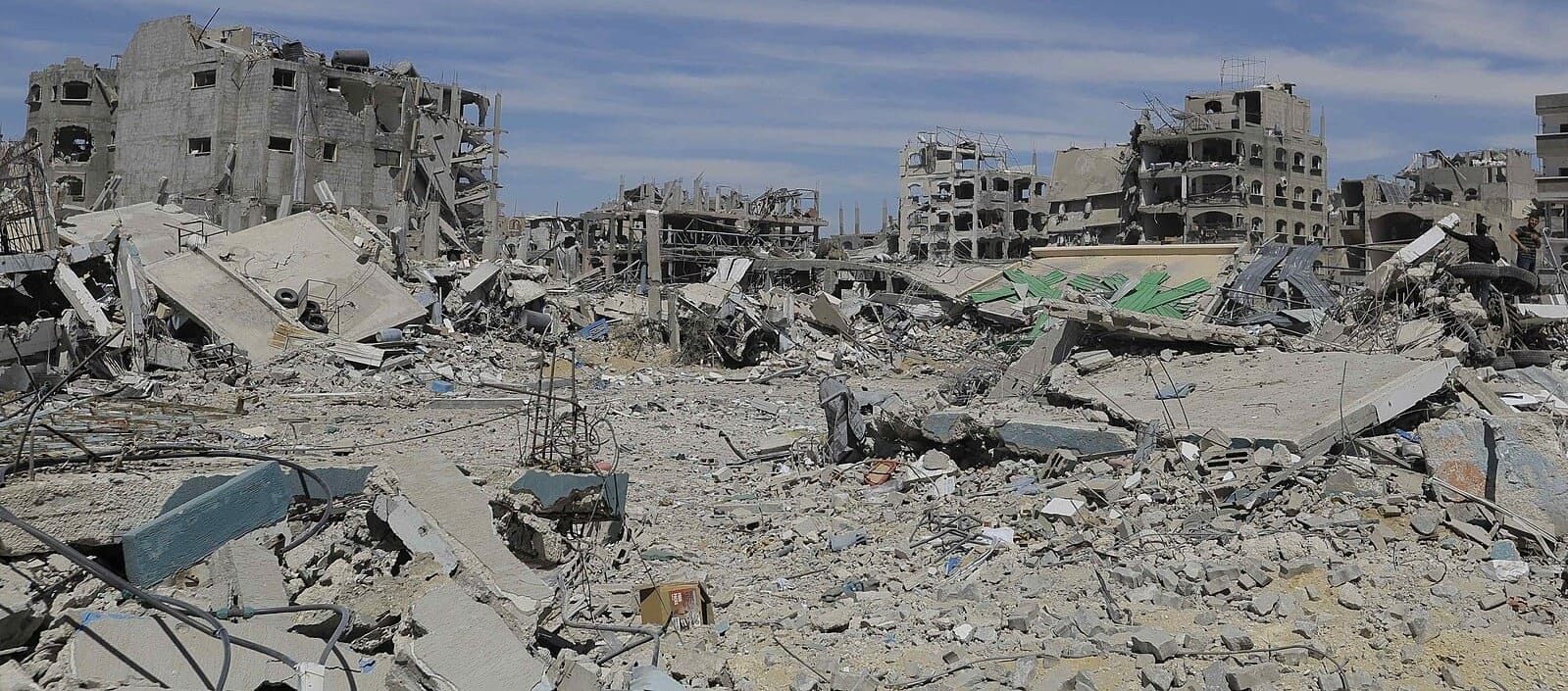Militarism: A Leading Cause of Environmental and Climate Crises

By Manabendra Nath Bera.
Synopsis - The climate and environmental impacts of war and military operations are often neglected in global climate negotiations. This article highlights how war, being the most profitable and lucrative business for imperialist nations, adversely impacts the environment and climate, such as deforestation, pollution, the destruction of ecosystems, greenhouse gas emissions, and climate change, urging a deeper consideration of its long-term global toll.
Introduction
Climate breakdown and environmental degradation have reached a global crisis, leading to an increasing number of deaths each year. Extreme weather events such as storms, fires, heatwaves, rising sea levels, and floods are displacing millions, creating climate refugees. Pollution and contamination of air, water, and soil are ravaging ecosystems. Billions are already suffering, and this number is projected to rise, making it the greatest humanitarian challenge the world has ever faced. Yet even in the face of this chaos, one major destroyer of our climate and environment remains underreported: the war-machine or the military-industrial complex.
War causes extensive, long-lasting environmental damage, affecting landscapes, ecosystems, biodiversity, and vital resources. Modern warfare not only results in human casualties but also leaves a trail of climate and environmental harm that can persist for decades or even centuries. While the human toll of war is widely acknowledged, the ecological destruction is often overlooked despite its profound, long-term effects on the planet’s ability to sustain life.
Climate Toll
When the Kyoto Protocol was adopted in 1997, military emissions were specifically excluded from the commitments to reduce greenhouse gas emissions. Similarly, under the Paris Agreement of 2015, military emissions were treated as voluntary reporting, a move that allowed for the continued underestimation of the true environmental toll of warfare. As a result, the climate impact of global military operations is frequently underreported and poorly understood, even though the military-industrial complex is a major contributor to global warming. This exclusion is a significant gap and is maintained deliberately in global climate governance to serve the interests of the military-industrial complex and imperialist powers.
GHG Emissions
The world’s militaries collectively account for an estimated 5.5% of all global greenhouse gas emissions, which is roughly equivalent to the emissions of an entire industrialized nation. If the global military were a country, it would rank as the fourth largest emitter of greenhouse gases, just between India and Russia. Further, if the United States military were considered as one country, it would have the 47th highest emissions worldwide. Its total emissions would be greater than countries like Denmark, Sweden, and Portugal.
The military’s carbon footprint is driven by several key factors, the most significant being the consumption of fossil fuels. Militaries, particularly those of the United States and its allies, use vast amounts of oil, gas, and other forms of dirty energy, both in peacetime and wartime. The production, transport, and deployment of weapons, aircraft, tanks, and other heavy machinery consume huge quantities of energy, releasing vast amounts of carbon dioxide and other pollutants into the atmosphere.
Wartime GHG Emissions
In the course of warfare, explosive ordnance such as bombs, missiles, and artillery shells are released into the environment, each detonation producing emissions. The US military alone has fired more than 337,000 bombs and missiles in the past two decades, each of which contributes to atmospheric pollution. Bombers and fighter jets that transport these weapons burn enormous quantities of fuel. For example, military jets can burn through 4.28 gallons of gasoline per mile, and every explosion contributes further to greenhouse gas emissions.
Warfare also accelerates the environmental impact by directly targeting oil production, storage, or transportation infrastructure. Countries like Colombia, Libya, Syria, and Iraq have seen their oil infrastructure targeted in military conflicts, leading to devastating environmental consequences. During the 1991 Gulf War, the oil fires set in Kuwait by retreating Iraqi forces contributed to more than 2% of global fossil fuel CO2 emissions that year. The pollution caused by these fires not only contributed to greenhouse gas emissions but also accelerated the melting of Tibetan glaciers due to the soot deposited on the ice, highlighting the far-reaching climate consequences of military conflicts.
The US-led War on Terror, which spanned multiple countries, including Afghanistan, Iraq, Syria, and Yemen, has released an estimated 1.2 billion metric tons of greenhouse gases into the atmosphere. This is roughly equivalent to the emissions produced by 257 million cars annually. Israel’s military activities, even without accounting for periods of active conflict, contribute approximately 7 million metric tons of CO2 equivalent annually—a footprint comparable to the emissions of Cyprus. When military operations are factored in, these numbers rise dramatically. For example, the US military’s extensive use of cargo flights to transport equipment has a significant carbon footprint. 200 cargo flights, burning of 50 million liters of aviation fuel and delivering over 10,000 tonnes of military equipment to Israel, alone resulted in 133,000 tonnes of CO2 emissions. This is more than the total emissions of Grenada for the entire year, highlighting the carbon-intensive nature of military logistics. In 2022, the US military alone generates about 48 million metric tons of CO2—more than the total annual emissions of 150 individual countries, including nations like Norway, Ireland, and Azerbaijan.

Peacetime GHG Emissions
The US military has 742 military bases across 82 countries and territories, with 171,736 active personnel deployed in 177 countries, in addition to the 1.2 million stationed in the United States. Each of these bases consumes substantial amounts of energy, whether in the form of electricity, fuel for vehicles and aircraft, or fossil fuels used in operational activities. In countries like Britain, where the military has 145 overseas sites in 42 countries, the emissions from these bases contribute to the military’s overall environmental footprint. Russia and India have 21 and three military bases overseas, respectively. The UK’s Ministry of Defense alone is one of the largest consumers of fossil fuels within the government, and similar patterns are seen in other militaries, including Russia, Saudi Arabia, Israel, and China.
Militaries consume fossil fuels at an astounding rate, even during peacetime. The US Department of Defense operates 566,000 buildings worldwide, with its network of military bases and facilities, and consumes 40% of its fossil fuel use for routine operations. This includes training exercises, vehicle operations, the operation of base facilities, and manufacturing activities. Additionally, military vehicles, aircraft, and naval ships consume vast quantities of fuel, further contributing to emissions. Similarly, in Switzerland and the UK, defense ministries are some of the largest consumers of energy within their respective governments.
Militaries Destroy Ecosystems
The environmental consequences of war are extensive and often irreversible, affecting natural landscapes, ecosystems, biodiversity, and resources critical to life. Modern warfare not only results in human casualties but also leaves behind a legacy of environmental degradation that can persist for decades, if not centuries.
Massive Deforestation
Deforestation is a particularly significant consequence of war. The world’s militaries occupy around 1% to 6% of all land. On these lands, they respect little environmental regulation and experiment with chemicals that are banned internationally. Military operations frequently clear vast areas of forest to create strategic advantages, whether through the destruction of trees, the removal of vegetation to clear lines of sight, or by causing wildfires. This leads to the loss of valuable forests that play an essential role in maintaining ecological balance and mitigating climate change.
During the Vietnam War, the U.S. military's use of defoliants such as Agent Orange to strip away jungle cover led to the destruction of over 5 million acres of forest and 500,000 acres of farmland. The loss of forest cover affected not only the local ecosystems but also the indigenous communities, who relied on these lands for food, shelter, and livelihood. The legacy of Agent Orange continues to affect the health of those exposed to it, and the land remains contaminated.

In Afghanistan, deforestation is a chronic issue, with the country losing nearly 95% of its forest cover in recent decades due to logging, military activity, and environmental mismanagement. As forests disappear, the ecosystems that depend on them—including wildlife habitats and water cycles—suffer irreversible damage.
In Iraq, the environmental impact of war has been devastating. The lush marshlands of southern Iraq, once some of the most ecologically rich areas in the Middle East, were reduced to just 10% of their historical size due to the construction of dams, military action, and the draining of waterways during the Gulf War in the 1990s. This destruction has had severe consequences for local biodiversity, with many species of birds, fish, and plants facing extinction.
Destruction of Unique Ecosystems
Bombing campaigns, military occupations, and other forms of modern warfare can devastate ecosystems, resulting in the loss of vital natural habitats for countless species. Military activities often involve clearing large areas of land for the construction of bases, transportation routes, and defensive structures. In some cases, entire ecosystems are disrupted to deprive enemies of cover, forcing local populations to evacuate and leaving vast tracts of land inhospitable for wildlife. The environmental toll of these actions extends far beyond the war zone, as these ecosystems are often irreplaceable and can take generations to regenerate, if they recover at all.
Studies show that the number of large animals in an area can decline by up to 90% during warfare, and even a single year of conflict can result in long-term wildlife loss. For instance, in the 1990s, the deliberate draining and destruction of the Mesopotamian Marshes in Iraq led to the loss of 90% of this vital ecosystem, displacing the Marsh Arabs who relied on it for their way of life.
The phrase "an army marches on its stomach" highlights the critical need to feed military forces, often leading to the hunting of local wildlife, particularly larger mammals with slower reproduction rates. In the ongoing war in Sudan, poaching to supply meat for soldiers has had devastating consequences for wildlife populations in neighboring Garamba National Park in the Democratic Republic of Congo. The park, once home to a thriving population of elephants, saw the number of elephants plummet from 22,000 to just 5,000. Additionally, the white rhino population was decimated, leaving only 15 individuals alive. This tragic decline in animal numbers underscores how conflict can extend far beyond the battlefield, inflicting lasting harm on vulnerable wildlife and ecosystems.
Furthermore, military transport—such as ships, cargo planes, and trucks—often carries non-native plants and animals, which can invade new environments and threaten native species. During World War II, the introduction of rats to the remote Laysan Island in the Pacific Ocean provides a striking example of how military conflict can lead to the near extinction of native species. The rats, brought by military forces, wreaked havoc on the fragile ecosystem of the island, where native birds had no natural predators. The Laysan finch and the Laysan rail, two species endemic to the island, were nearly wiped out by the rats, which ate their eggs and young birds. The rats also contributed to the destruction of the island’s vegetation, further endangering the already vulnerable species that depended on the native plants for food and shelter. In addition to rats, other invasive species, such as the sandbur, an aggressive plant introduced during the war, also took root. The sandbur spread quickly across the island, crowding out the native bunchgrass that had been essential for the survival of local birds. As the sandbur proliferated, it altered the entire habitat of the island, making it increasingly difficult for native species to thrive.
Military Pollution and Contamination
The toxic aftermath of war extends beyond the immediate damage to ecosystems, with pollution from the use of chemical weapons, explosives, and munitions heavily contaminating soil, water, and air. Many weapons used in modern warfare contain hazardous materials such as depleted uranium and heavy metals, both of which have devastating long-term effects on both human health and the environment.
For example, during the Gulf War of 1991, an estimated 320 tons of depleted uranium (DU) munitions were used. The use of DU in weapons is highly controversial due to its toxicity and long-lasting environmental effects. When these munitions explode, they release toxic particles into the air and soil, which can contaminate vast areas and pose serious health risks to civilians. The soil contamination caused by DU can last for centuries, making affected areas dangerous for habitation and agriculture long after the conflict ends. The health effects of exposure to DU have been linked to an increased risk of cancers, birth defects, and other chronic diseases among those exposed.
The production, testing, transport, and use of advanced weapons have some of the most devastating environmental consequences of war. At the conclusion of conflicts, weapons are often discarded in the ocean, leaving lasting ecological damage. For example, from World War I until the 1970s, outdated munitions and chemical weapons were regularly dumped into the sea by the United Kingdom. A staggering 1 million tonnes of munitions now lie scattered on the ocean floor in a natural trench between Northern Ireland and Scotland, where they sometimes detonate underwater. Additionally, chemical weapons have been known to wash up on nearby beaches, posing a direct threat to human and marine life. The legacy of war is also evident in places like the Solomon Islands, where unexploded bombs from World War II continue to claim lives and cause injuries to this day, highlighting the long-term dangers of weapon disposal and the ongoing environmental cost of warfare.
During the 2006 Israel-Lebanon conflict, the bombing of the Jiyeh power plant in Lebanon released an estimated 10,000 to 15,000 tons of oil into the Mediterranean Sea. The resulting oil spill affected the Lebanese coastline and extended into Syrian waters. This caused severe ecological damage, killing marine life, including seabirds and fish, and devastating local fishing industries. Oil spills from bombed power plants and storage facilities are a common environmental disaster in wartime, with long-lasting impacts on marine ecosystems.

War also contaminates bodies of water with chemicals used in weapons and explosives. In places like Syria, Iraq, and Afghanistan, contamination from munitions, unexploded ordnance, and the breakdown of industrial facilities has led to the pollution of groundwater and surface water sources. This not only affects local communities' access to clean drinking water but also damages the aquatic ecosystems that depend on these water sources for survival. The Vietnam War saw the use of chemical weapons such as Agent Orange in an effort to destroy forests and crops used by the Viet Cong. Agent Orange decimated 4.5 million acres of agricultural land and forests, poisoning soil and water for generations to come.
The Environmental Costs of Rebuilding
War’s environmental and climate costs extend far beyond the immediate destruction. After the devastation of conflict, the process of rebuilding poses its own significant challenges, not only in terms of human life and infrastructure but also through the environmental and climate toll it demands.
Emissions from Reconstruction
Rebuilding after war is a resource-intensive process that requires substantial quantities of raw materials such as cement, steel, wood, and sand. These materials, especially cement and concrete, are known to have high embodied carbon due to the energy-intensive nature of their production. In 2019, the global construction industry was responsible for 3,560 Mt CO2 of emissions, making it a major contributor to climate change. Among the raw materials used in construction, cement production stands out as particularly carbon-intensive, accounting for approximately 8% of global greenhouse gas emissions.
In areas like Syria, where much of the housing stock is either partially or completely destroyed, the rebuilding effort will be both costly and environmentally damaging. For example, estimates suggest that the reconstruction of Syria's housing stock could release around 22 Mt CO2. This environmental cost is compounded by material scarcity and challenges in the logistics of importing and transporting materials to conflict zones, which further intensify emissions.
Gaza - A Harrowing Example
One of the most recent and devastating examples of the environmental toll of war is the situation in Gaza. In just one year of continuous conflict, the landscape of Gaza has been altered to the point of becoming nearly unrecognizable. Nearly 60% of the region has been damaged or destroyed, with certain areas suffering far worse devastation: 69.3% of North Gaza, 73.9% of Gaza City, 49.1% of Deir el-Balah, 54.5% of Khan Younis, and 46.3% of Rafah have been either partially or completely destroyed (see a report in 2024). The extent of the damage is staggering, with entire neighborhoods, infrastructure, and historically significant buildings leveled.

An estimated 75,000 tonnes of explosives have been dropped on Gaza, devastating its urban landscape and creating an overwhelming amount of debris. According to experts, it could take years to clear the 42 million tonnes of debris, much of which is contaminated with unexploded bombs and hazardous materials, adding a further layer of risk for both reconstruction workers and civilians attempting to return to their homes.
Rebuilding Gaza is projected to be a monumental and costly task, with experts estimating that it could cost more than $80 billion. The economic toll on the region is already immense, but the climate and environmental costs of reconstruction could be even more significant. If the blockade persists, it is estimated that the rebuilding process could take as long as 350 years! Without the blockade, it is still projected that it could take 40 years to rebuild Gaza fully. However, even in the best-case scenario, the environmental cost of this extensive rebuilding process would continue to rise. The production of construction materials, transport of goods, and the rebuilding of infrastructure will require large amounts of energy, much of which will come from fossil fuels, especially in regions where renewable energy infrastructure is lacking or severely damaged.
End Militarism: The Only Way Forward
There is a prevailing narrative that war is a necessary means to defend a nation's sovereignty, combat terrorism, or preserve democracy. This argument is often promoted by powerful imperialist nations, their media, and other influential entities in an attempt to justify military interventions across the globe. However, history repeatedly shows that war, in its various forms, has never truly resolved any socio-political disputes—whether on a regional or global scale. This narrative, however, serves a deeper, more troubling agenda: the interests of the military-industrial complex. These powerful entities, particularly in imperialist nations, benefit enormously from the profits generated by the war machine. They have a vested interest in manufacturing conflicts and wars to sell weapons and plunder valuable natural and human resources. The consequences of these conflicts and wars are often catastrophic, not just in terms of human lives lost and communities torn apart, but also in their long-term environmental and climatic repercussions.

The global community must demand accountability for the greenhouse gas emissions and environmental degradation caused by war and the military-industrial complex, particularly as it relates to the destruction of ecosystems, biodiversity, and the atmosphere. As nations craft global climate policies, it is critical to recognize the substantial environmental cost of militarization. The military’s role in contributing to climate change through emissions, resource depletion, and ecological damage must be explicitly addressed. To combat the climate crisis effectively, policies must include measures to mitigate the military’s environmental impact and integrate this issue into broader global climate action.
Moreover, scientists, engineers, physicians, and experts who contribute to the development of war technologies—whether directly through the creation of weapons or indirectly through technological advancements that support military operations—must reflect on the ethical implications of their work. They must ask themselves whether their intellectual labor and innovations should be used to advance the cause of death and destruction of the environment and climate of our planet, or whether these should be directed toward the betterment of humanity, fostering peace, prosperity, and sustainability. The choice is theirs, and it is a choice that could either perpetuate the cycle of destruction or help break it for future generations and save humanity before it's too late.
Manabendra Nath Bera is an assistant professor and quantum information scientist from India, an international organizing committee member of the International Union of Scientists (IUS) Against Militarism and the Destructive Use of Science and Technology, and an all-India secretariat member of the Breakthrough Science Society, India.




Comments ()